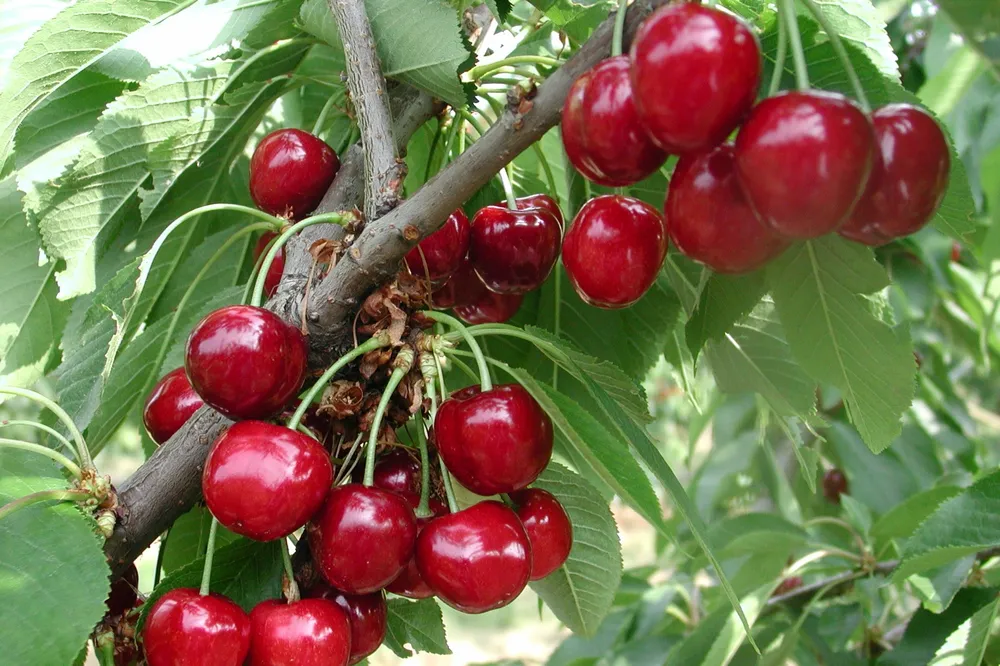Sweet cherry trees constantly bear fruit, are adapted to environmental conditions, produce high-quality fruit that are in demand on the market, and are easy to care using modern technologies.
In modern fruit growing, it is recommended to use intensive systems for growing sweet cherry trees grafted on rootstocks of medium vigor (Maxima 14, Gisela 6) at a planting distance of 4-5x2-3 m or on dwarf rootstocks (Gisela 5) at a planting distance of 3.5-4x1.5-2 m, using tree support means such as trellises and wire or individual wooden rods installed at the time of tree planting.
Between the years 2022 and 2023, in the north of the Republic of Moldova, the impact of the cultivation system of sweet cherry trees (Prunusavium L.) of the Kordia, Regina, Summit, Sweet Valina, Sweet Stefanny, Sweet Saretta and Marysa varieties, grafted on Gisela 6, which were planted in 2018 at a distance of 4x1 m was evaluated.
The trees had super spindle shaped crowns. The shaping and pruning of the trees, the yield and the distribution of the fruit according to their diameter were studied. The purpose of the pruning was to create favorable air drainage in the crown.
The trees that have super spindle shaped crowns, which is a variant of the thin spindle shaped crowns, require posts and wires to support them, and an irrigation and fertilization system. At planting, the unbranched trees, grafted on Gisela 6, were shortened 30-40 cm from the ground in order to form a well-developed shoot, which would become the axis and develop branches that develop from lateral buds. In trees with lateral branches, the branches were shortened to 2-3 vegetative buds.
The crown was composed of a well-developed axis, which had short branches and fruiting branches. The crown shaping was done in order to keep the branches near the axis in a physiologically active state for fruiting. It was performed by shortening the shoots to 1/3 of their length when the flower buds had differentiated and allowed the remaining buds to mature.
During the period of vegetative rest, the excess of fruiting branches was cut. During the fruiting period, the fruit yield was 15-20 t/ha.
In recently planted orchards, it is necessary to apply pruning that overlap with the fruit harvesting or its completion, which reduce the crown shaping time and favor the early fruiting of the trees. During the fruiting period of the trees, the branches are not shortened but thinned; during the period of full fruiting, the pruning stimulates the growth and regulate the fruiting.
Russu Stanislav
Technical University of Moldova, Chisinau, Republic of Moldova
Cherry Times - All rights reserved










